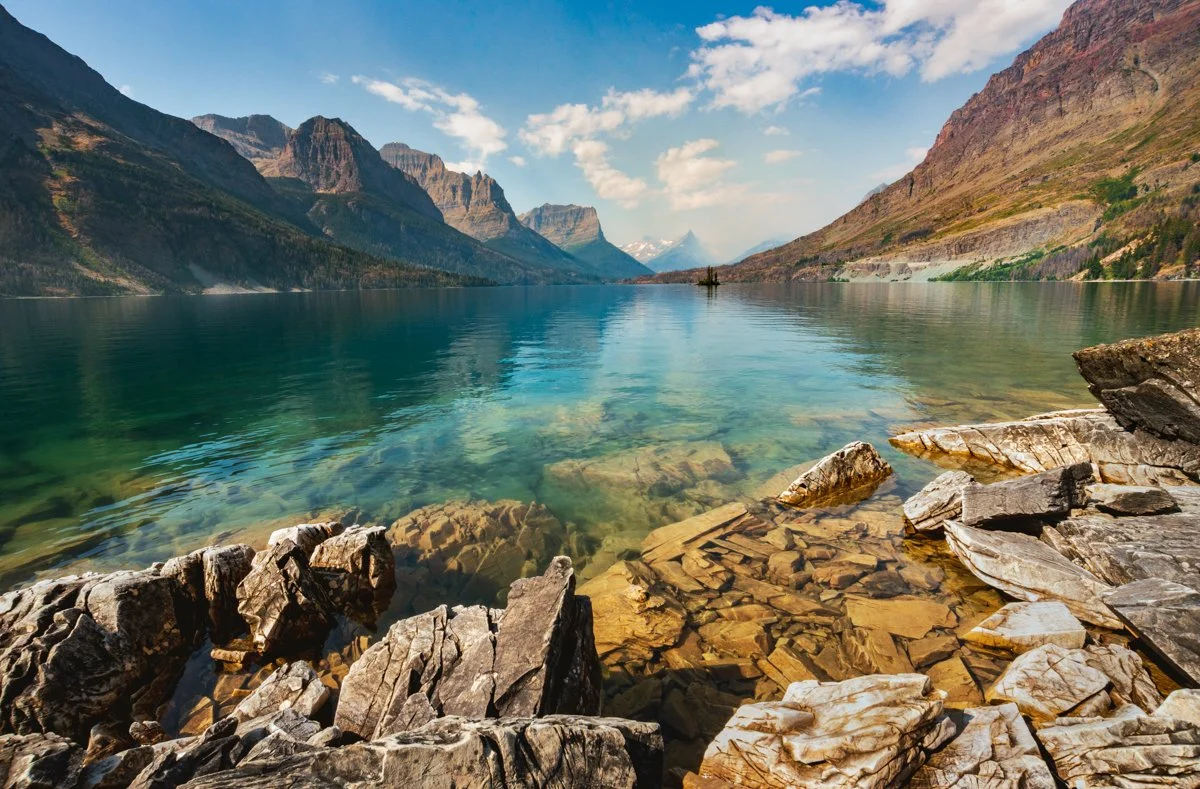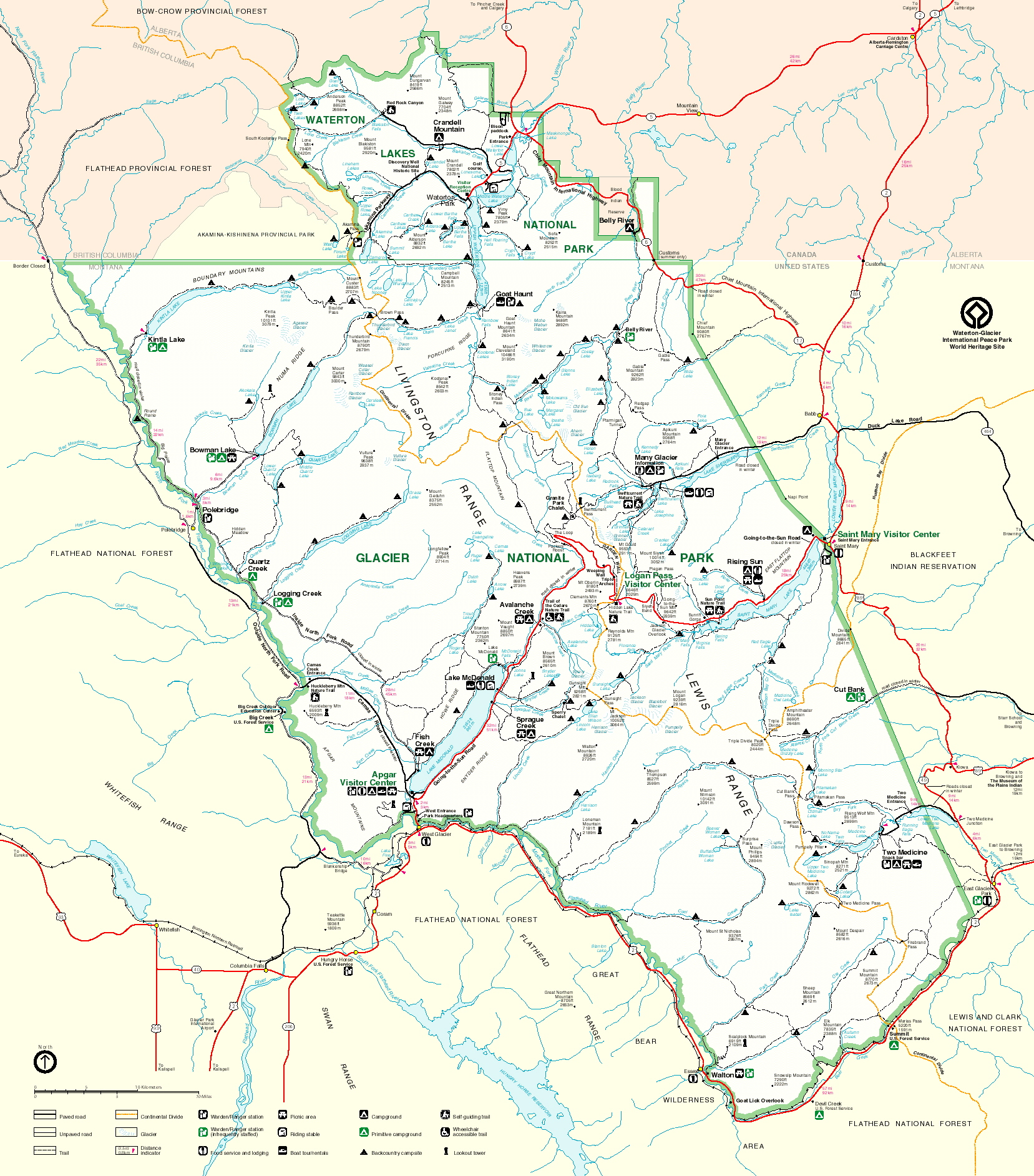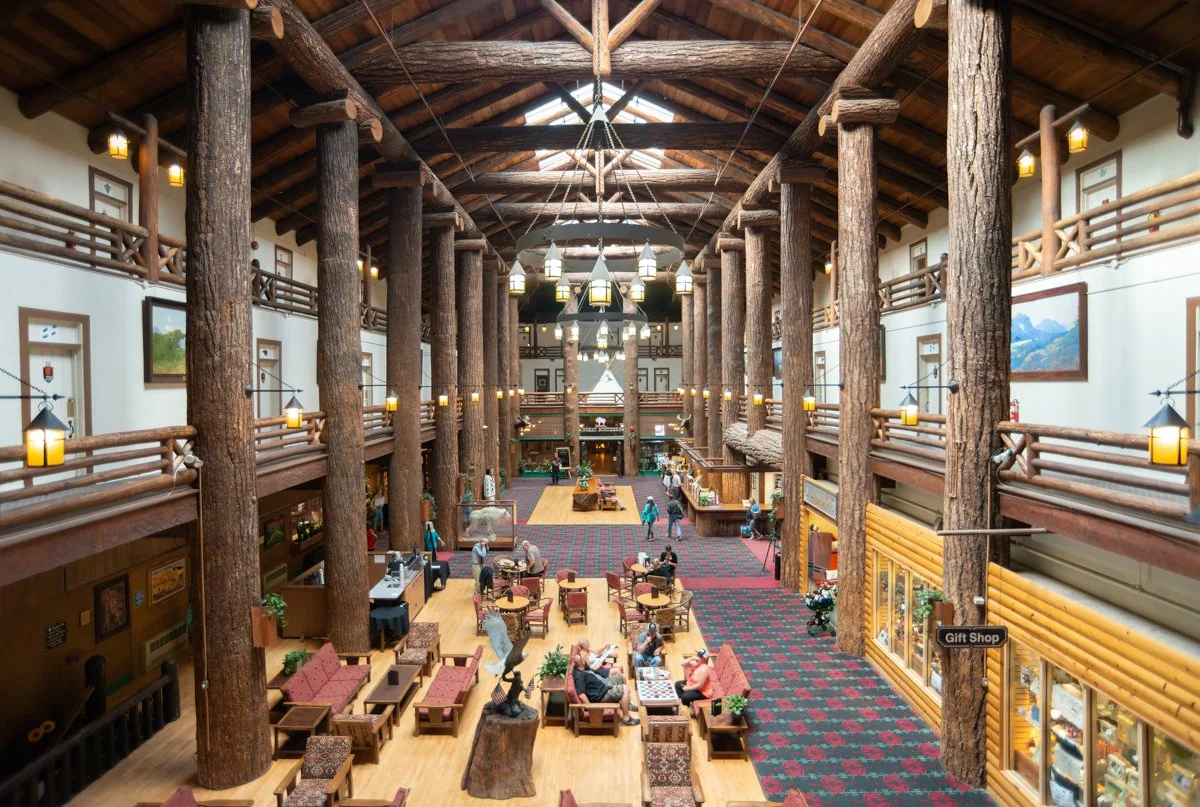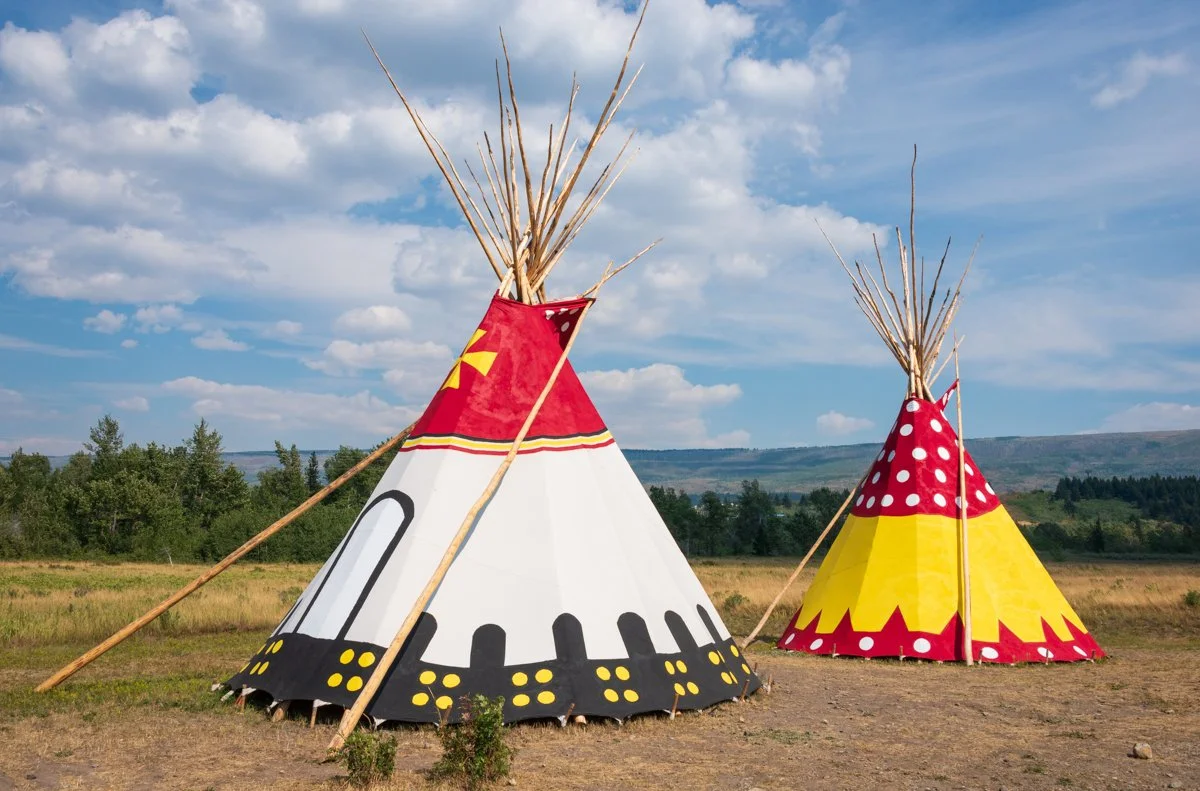Glacier National Park (Montana)
Nestled in the rugged mountains of northwestern Montana, Glacier National Park is a breathtaking expanse of pristine wilderness, characterized by dramatic peaks, crystal-clear lakes, and thriving ecosystems. This remarkable park, renowned for its stunning alpine landscapes and abundant wildlife, offers visitors a chance to explore a world of unparalleled natural beauty and rich geological history.
Established as a national park in 1910, Glacier National Park spans more than one million acres, encompassing a diverse range of terrain that includes verdant forests, jagged peaks, and more than 700 sparkling lakes. The park's iconic glaciers, which once numbered more than 150, have shaped the landscape over millennia, creating the dramatic valleys and soaring peaks that define Glacier today.
Glacier National Park is home to an incredible array of plant and animal life, which has adapted to thrive in the park's challenging environment. Iconic species such as grizzly bears, mountain goats, and wolverines roam the park's vast expanse, while the skies are patrolled by majestic birds of prey, such as the golden eagle and the osprey. The park's diverse habitats provide a refuge for countless other species, contributing to the rich tapestry of life that flourishes within its boundaries.
Visitors to Glacier National Park can partake in a wide range of recreational activities that showcase the park's unmatched beauty. The park offers more than 700 miles of trails for hiking and backpacking, allowing guests to immerse themselves in the diverse landscapes that characterize Glacier. Scenic drives, such as the iconic Going-to-the-Sun Road, provide visitors with breathtaking vistas and access to popular park destinations. Kayaking, fishing, and wildlife viewing are also popular activities, offering unique ways to engage with the park's natural splendor.
The nearby communities of West Glacier, East Glacier Park, and St. Mary serve as gateways to Glacier National Park, offering a variety of accommodations, dining options, and local attractions. These welcoming mountain towns ensure that every visitor can experience the park's remarkable beauty in comfort and style.
MUST SEE SITES
Going-to-the-Sun Road: This scenic drive takes visitors through the heart of the park and offers stunning views of the surrounding landscape, including the park's glaciers, mountains, and lakes. Visitors can also explore the area's hiking trails, historic landmarks, and ranger-led programs.
Grinnell Glacier: This stunning glacier is one of the park's most iconic features, featuring stunning blue ice and towering peaks. Visitors can explore the area by taking a guided hike, attending a ranger-led program, or simply taking in the stunning views of the surrounding landscape.
Lake McDonald: This stunning lake is located in the heart of the park and features crystal-clear waters, stunning views of the surrounding mountains, and opportunities for boating, fishing, and wildlife viewing. Visitors can explore the area by taking a scenic drive, hiking one of the park's trails, or simply relaxing and taking in the stunning views.
Many Glacier: This scenic area is located in the northeastern part of the park and features stunning glaciers, mountains, and lakes. Visitors can explore the area by taking a guided hike, attending a ranger-led program, or simply taking in the stunning views of the surrounding landscape.
Wildlife Viewing: Glacier National Park is home to a variety of unique and diverse wildlife, including grizzly bears, elk, moose, and mountain goats. Visitors can witness these incredible creatures up close by taking a guided wildlife viewing tour or simply exploring the area's hiking trails and backcountry areas.
GETTING THERE
The most popular ways to arrive at Glacier National Park are by car and by train. If you're driving, the park is located in northern Montana and can be accessed via several routes. From the east, you can take US Highway 2 to the park entrance. From the west, you can take the Going-to-the-Sun Road to the park entrance.
If you prefer to travel by train, the Amtrak Empire Builder route stops at the park's East and West Glacier stations. The Empire Builder operates daily service between Chicago and Seattle/Portland, with stops in several cities along the way.
Once you arrive at Glacier National Park, the best way to get around is by car or by shuttle bus. The park has a free shuttle bus system that operates on the Going-to-the-Sun Road, which is a scenic road that offers stunning views of the park's many mountains, lakes, and glaciers. There are also several hiking trails available for exploring the park's many ecosystems and wildlife.
GATEWAY COMMUNITIES
The towns of West Glacier, East Glacier Park, and St. Mary serve as the primary gateway communities to Glacier National Park, offering various accommodations, dining options, souvenir shops, and outdoor recreation equipment rentals.
ACCOMMODATIONS
Visitors can find various lodging options in the surrounding communities, including hotels, motels, and vacation rentals. The park itself features a number of lodges and cabins, such as the Many Glacier Hotel, Lake McDonald Lodge, and Rising Sun Motor Inn. Additionally, campgrounds are available within the park, providing both tent and RV sites.
CAMPGROUNDS
Glacier National Park has 13 campgrounds, with more than 1,000 campsites available. Some of the most popular campgrounds include Apgar, St. Mary, Many Glacier, and Two Medicine. These campgrounds offer tent and RV sites, as well as basic amenities like restrooms, drinking water, and picnic areas. Some campgrounds require reservations, while others are available on a first-come, first-served basis.
WEATHER/CLIMATE
Glacier National Park has a continental climate, with cold winters and mild summers. Average summer temperatures range from the 40s to 70s Fahrenheit, while winter temperatures can dip below freezing. Visitors should be prepared for potential rain, snow, and rapidly changing weather conditions.
RECREATION OPPORTUNITIES
Numerous recreational opportunities await visitors, including hiking, backpacking, wildlife viewing, and scenic drives. The park's most popular hike is the Highline Trail, which provides stunning views of the park's mountains, valleys, and glaciers. Other notable hikes include the Grinnell Glacier Trail and the Iceberg Lake Trail. Wildlife viewing is also popular, with a variety of species, including grizzly bears, mountain goats, and bighorn sheep, calling the park home.
VISITOR CENTER
Glacier National Park has several visitor centers, including the Apgar Visitor Center, Logan Pass Visitor Center, and St. Mary Visitor Center. All provide information about the park's history, ecology, wildlife, and recreational opportunities. Rangers are available to offer guidance and answer questions. The visitor centers are open daily during the summer season, with reduced hours and services during the off-season.
THINGS TO KNOW
Entrance Fee: $35 per vehicle (7-day pass), $30 per motorcycle (7-day pass), $20 per person (7-day pass), or $70 for an annual park pass.
Pet Policy: Pets are allowed in developed areas, frontcountry campgrounds, picnic areas, and along roads, but must be leashed and under control at all times. Pets are not allowed on trails, in the backcountry, or inside park buildings.
Hours of operation: Glacier National Park is open 24 hours a day, 7 days a week, year-round. Some roads, campgrounds, and facilities may be closed or have limited hours, depending on the season.
Website: https://www.nps.gov/glac/index.htm
Contact phone number: (406) 888-7800
Address: Glacier National Park, West Glacier, MT 59936, United States





